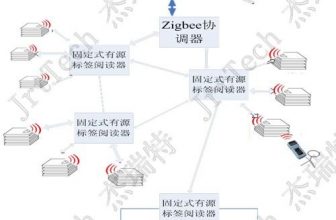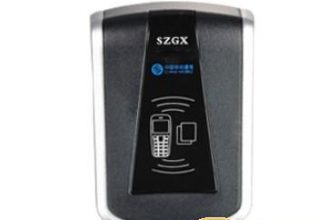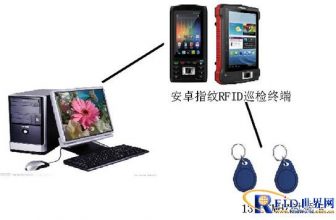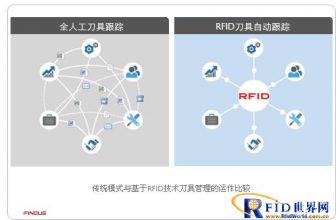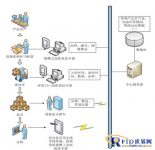
RFID intelligent warehouse management system solution
[ad_1]
1. System introduction
At present, market competition is becoming increasingly fierce. It is very important for enterprises to improve production efficiency and reduce operating costs. Warehousing logistics management is widely used in various industries, designing and establishing a complete set of warehousing management processes, improving the efficiency of warehousing turnover, reducing the occupation of operating funds, turning frozen assets into cash, reducing the cost caused by warehousing elimination, and improving the company An important part of production efficiency.
Second, the system framework

RFID is a non-contact automatic identification technology realized by radio frequency communication. RFID tags are small in size, large in capacity, long in life, and reusable. They can support fast reading and writing, multi-eye identification reading, non-visual identification, mobile identification, positioning and long-term tracking management. In recent years, RFID technology has entered the stage of commercial application.CurrentlyRFIDTechnology has been continuously combined with Internet and communication technologies, and has been applied to many fields such as industrial automation, commercial automation, transportation, logistics, supply chain management, public information services, etc., gradually realizing global item tracking and information sharing, greatly improving Management and operation efficiency, cost reduction, RFID technology is considered to be one of the most promising information technologies in the 21st century. The purpose of the design of the warehouse management system based on RFID technology is to realize the automation of the goods out/in control, the storage location and quantity statistics of the goods, and the information inquiry process, so as to facilitate the management personnel to carry out statistics, inquiry and grasp the flow of materials, so as to achieve convenience, speed, Safety, high efficiency and other requirements.
Three, system composition
The RFID system consists of “RFID Tag (RFID Tag)”, “Reader(Antenna + Controller)” and “PC and other advanced equipment” are composed of three elements. “RFID Tag” is composed of an IC chip and antenna that can store a large amount of data, and is stored in the RFID chip according to the instructions of “PC and other advanced equipment” The data can be read or erased by the “reader”.

3.1 RFID electronic tags
Built-in global unique ID, and has 96bit/240Bit space to store user customized information; waterproof and oil-proof; long service life; long reading distance, tag data can be encrypted, and information is tamper-proof; tags are erasable and recyclable
3.2 Long-distance reader
The serial port is used to communicate with the computer; the RFID tag reads the cargo information in a non-contact manner, with an accuracy rate of 98%. Read and write distance up to 8m, working frequency: 900MHz, in line with EPC global Gen2 ISO18000-6C standard, in line with FCC regulations; reliable reading performance, can work in a dense reader environment; tag data rate up to 640Kbps, read per second 1000 tags; signal receiving sensitivity -80dB; mainly used for aviation, highway, fashion, medicine, asset management, anti-counterfeiting, retail, etc.
3.3 Portable short-range reader
Support protocol standards: ISO18000-6B, EPC Class 1, EPC Class 1 GEN 2; maximum RF output power: 30 dBm; identification card time: single card identification less than 8ms; read/write card time: read every 8 bytes less than 5ms, Write every 4 bytes less than 25ms; Communication interface: Type B: RS-232, RS485, Wiegand26/34, USB; Working status prompt: buzzer, communication indicator, power indicator, card reader indicator
3.4 Smart car inventory
It can take inventory of pallets and high-level shelves. It can work continuously for 8 hours on a single charge. It can synchronize with system data via Wi-Fi or GPRS. The reading and writing distance can reach 8m. Working frequency: 900MHz, in line with EPC global Gen2 ISO18000-6C standard, in line with FCC regulations, large reading range and high accuracy.
3.5 Optional equipment
Label printer, cargo location and cargo search touch screen, alarm light, handheld reader
Hand-held reading of RFID tag information can display product information. The reading distance is 1-2 meters, which can realize inventory shift, query, and inventory in the distribution store.Real-time data exchange with the system via WiFi and GPRS networks
3.6 Management software
3.6.1 Inbound and outbound management software
The data collected by the reader is processed, and it can be connected with the user’s existing application system; at the same time, it provides customized development of the application system according to the actual needs of the user.
3.6.2 Two-dimensional electronic cargo location management software
Tracking cargo location information, cargo storage location, convenient for cargo location preparation when entering the warehouse, quick search out of the warehouse, ensuring advanced selection, avoiding inventory waste and expiration, and improving warehouse utilization. At the same time, according to the actual needs of users, provide customized development of application systems.

Four, system implementation
4.1 Warehousing
In the finished product packaging workshop, workers first affix RFID electronic tags on the products, and then affix the box label after packing in batches. If the pallet is required, the pallet label can also be affixed after the pallet is finished; the general labeling methods are: product list Pieces of labeling multiple products are packed together, the outer package is labelled on the tray, and the packaged product is associated with the single product label or outer package label data. The packaged product is stored in the warehouse by the loading and unloading tool through the channel composed of the RFID reader and the antenna. The RFID equipment automatically obtains the quantity in the warehouse and records it in the system. For example, if there is a pallet label, the information of each pallet is written into the pallet label through the import port reader and writer, and the order data is associated at the same time, and then the warehouse location is calculated through the computer warehouse management information system (Or manually specify the location of the batch at the beginning).
4.2 Outbound
The consignor of the logistics department generates an outbound order according to the invoice required by the sales: that is, according to the outbound priority (such as the first out of the warehouse before the production date) to query the warehouse for the storage location and inventory status of the outbound goods, if there are customers The designated batch number will be queried according to the designated batch number, and the outbound cargo picking position and the corresponding pallet belonging to the goods will be generated.
The consignee brings the outbound order to the warehouse manager, and the warehouse manager checks the information to arrange for the forklift driver to carry out the corresponding product out of the warehouse. The forklift picks up the goods and passes through the exit gate. The exit gate RFID reader reads the pallet label on the pallet to obtain the outbound information, and verifies whether the product batch number and location listed in the shipped product and the outbound order are correct. After the delivery is completed, the warehousing terminal prompts the delivery details for the administrator to confirm, and automatically updates the data to the database.
4.3 Inventory
Warehouse management personnel use smart inventory trucks and push them on each shelf or pallet. The inventory truck can read the quantity and type of goods on the shelf or pallet and accumulate them. After the inventory is completed, an inventory report will be generated and provided in the system. The data information of the system is compared with the actual inventory quantity in the warehouse for the reference of warehouse management personnel. At the same time, the data information in the system can be modified as needed to ensure that the goods and accounts are consistent.
Five, system performance
Labor can be reduced by 20-30%;
99% of warehouse products are visualized, reducing the risk of missing goods;
Improved supply chain management will reduce work service time by 20-25%;
Improve the accuracy and reliability of storage information;
Efficient and accurate data collection provides operational efficiency;
Automatic collection of incoming and outgoing data to reduce human error;
Reduce enterprise warehousing logistics costs.
[ad_2]


